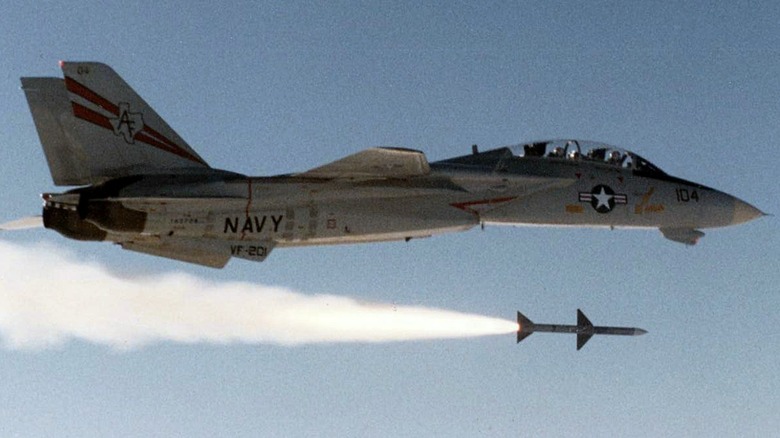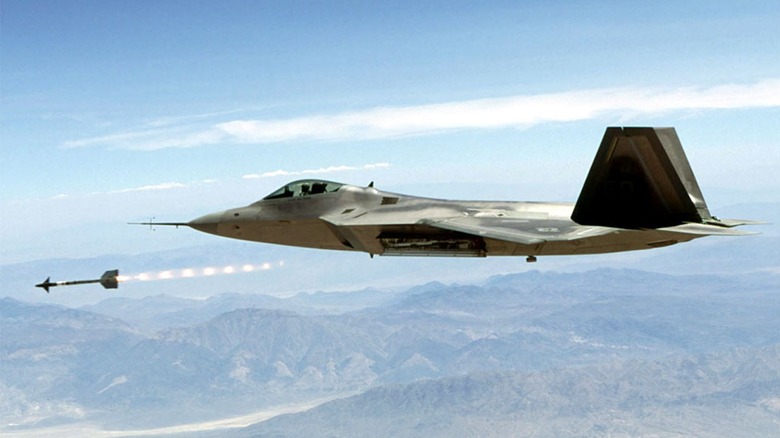Why Do Fighter Pilots Say 'Fox' When They Fire A Missile?
If you've ever watched a movie like "Top Gun," "Independence Day," or anything dealing with fighter jets, you've likely heard pilots say "Fox One," "Fox Two," or "Fox Three" when they fire a missile. Movies don't explain what the fox codes mean, but rest assured, they have a meaning, and they're used for a practical purpose. It all boils down to the many different types of missiles that NATO fighter jets are capable of firing, and because there are 32 countries in NATO, there are a lot of options.
Still, despite the plethora of powerful ordnance fighters that can fire, pilots use one of three NATO brevity codes to quickly and easily report what ordnance is being sent toward an enemy. The primary purpose of the fox brevity codes used by NATO is to reduce the chances of friendly fire because calling out the type of missile informs a pilot's wingman and others operating in the area what kind of weapons are currently careening through the air.
Some air-to-air missiles are more advanced than others, and each fox code refers to one of three types: semi-active radar homing, infrared homing (heat-seeking), and active radar homing. Each of these three types of missiles has positives and negatives, and they're fired depending on the situation. It's up to the pilot to determine the type of ordnance to fire, and once they do, they get on the radio and say their callsign, followed by one of the fox codes. This is true whether the pilot is an American servicemember flying a U.S. Air Force F-22 Raptor or it's a Greek pilot operating an F-35 Lightning II and has been since the codes were first used during the Vietnam War.
What the fox codes mean for fighter pilots
When a pilot fires off a missile and calls a fox code, they're taking a step toward reducing potential friendly fire incidents. The three types of ordnance codes help keep things clear across the battlespace. Fox One means that the pilot has fired off a semi-active radar homing missile like the AIM-7 Sparrow. Fox Two informs allies that an infrared homing missile is currently flying through the air such as the AIM-9 Sidewinder. Finally, Fox Three involves active radar-homing missiles like the AIM-120 AMRAAM carried by aircraft like the F-22 fighter jet.
Fox One missiles use a semi-active radar homing system to find their target, which means that they utilize the radar from the jet that fired them. The aircraft is required to maintain a radar lock throughout the missile's flight, or it will lose its target. Fox Two missiles have no radar and instead use infrared sensors to find heat sources with a specific focus on jet exhaust. They're primarily used for close-range dogfighting because a heat-seeking missile can potentially seek out and destroy an allied aircraft, making the Fox Two brevity code particularly important in avoiding friendly fire incidents.
Fox Three missiles use active radar-homing to find targets, and because they have their own radar transceiver (instead of just a receiver used in semi-active radar-homing missiles), they operate at long range, and the firing aircraft doesn't need to maintain a lock during the missile's flight. Each of these types of missiles has specific conditions in which they're best utilized, so when a pilot calls out "Eagle One, Fox Three," they know what they're doing, and so do their wingmen and others flying in the area.

